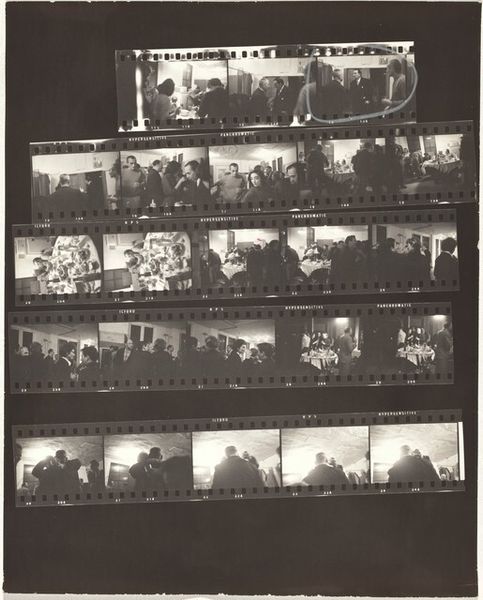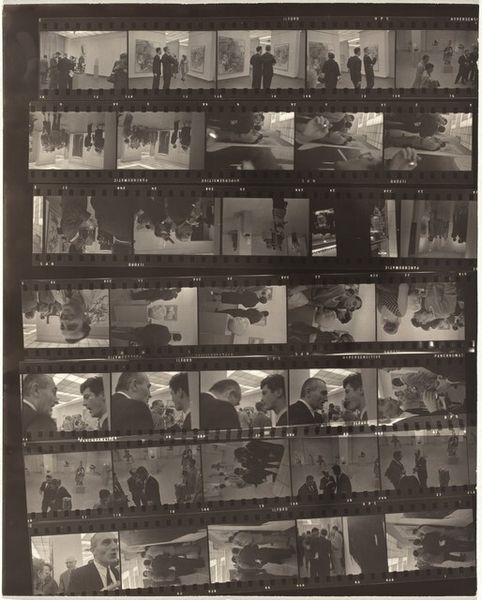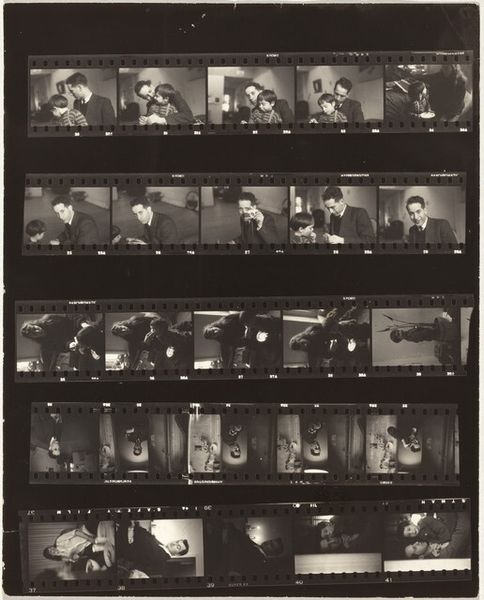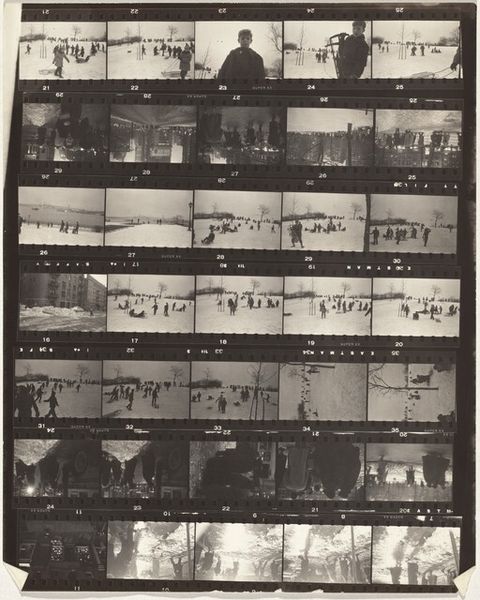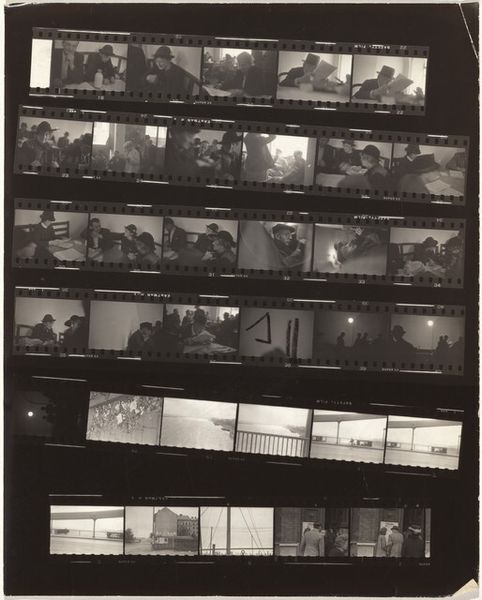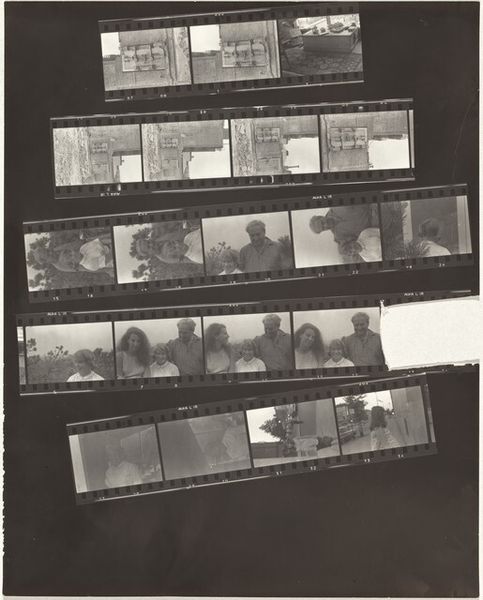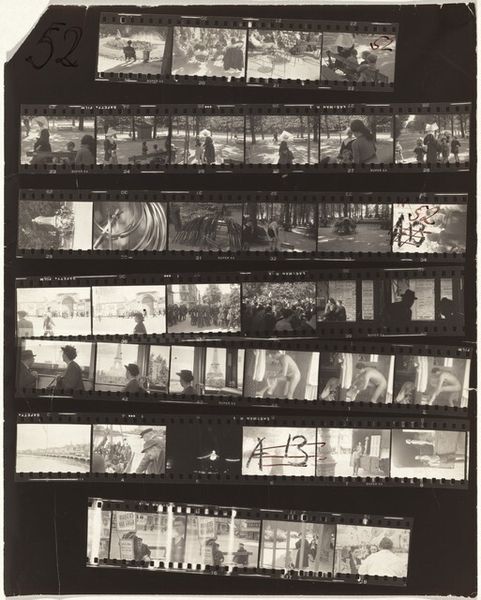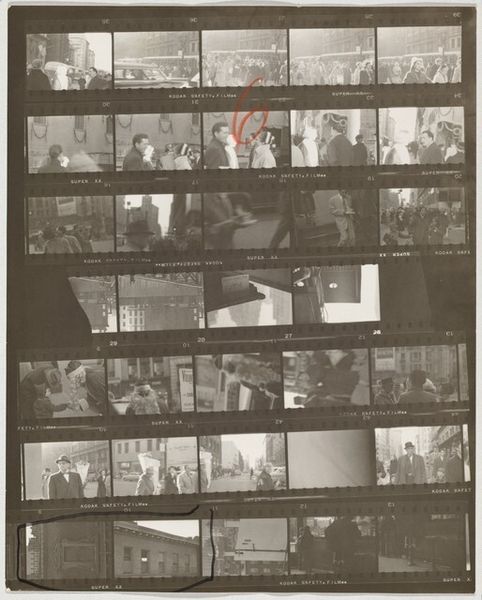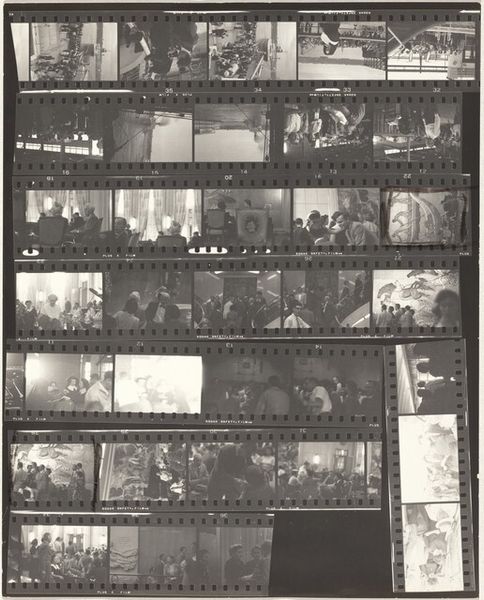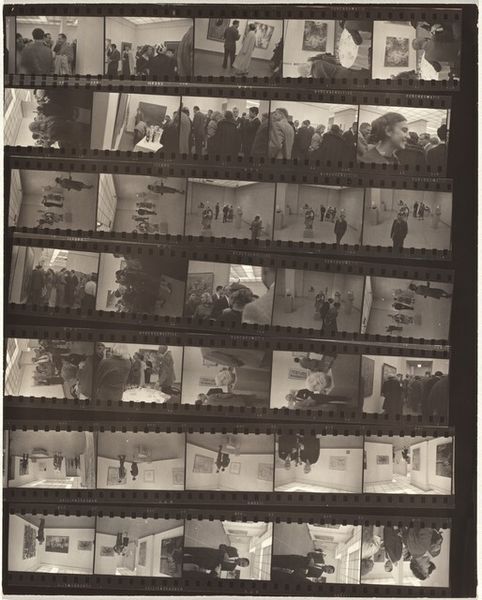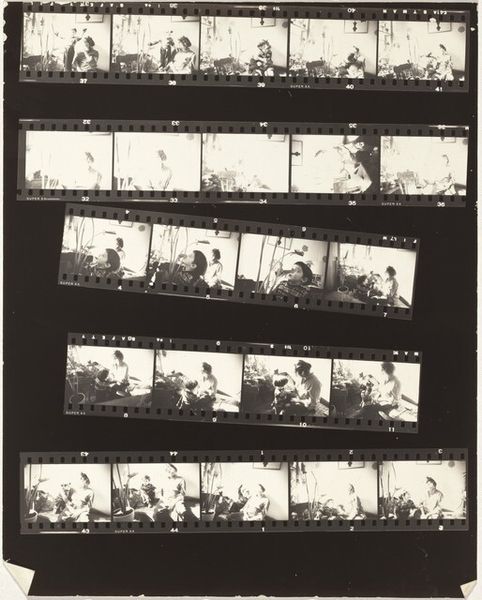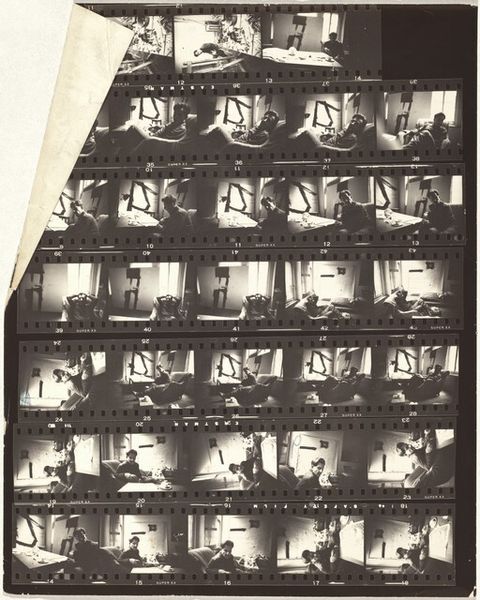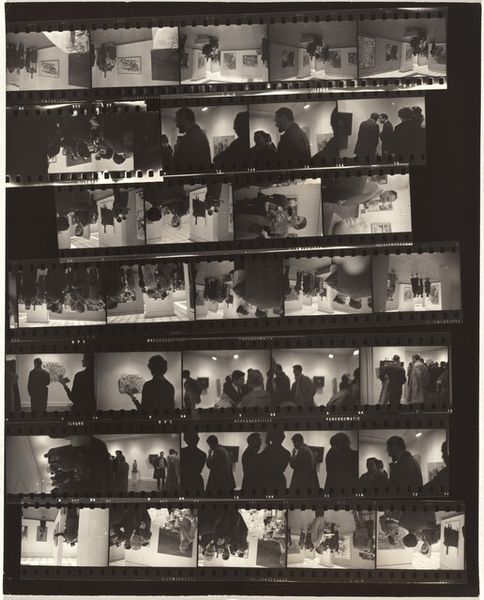
Dimensions: overall: 29.8 x 23.8 cm (11 3/4 x 9 3/8 in.)
Copyright: National Gallery of Art: CC0 1.0
Curator: This fascinating piece is a contact sheet by Robert Frank, titled "Pablo Casals--Prades, France no number," taken in 1949. The work is a gelatin silver print. What strikes you about this contact sheet, as a material object? Editor: The immediate impression is one of raw documentation. It feels almost like forensic evidence, presented as is. The physicality of the film strip is apparent. Curator: Precisely. Contact sheets are inherently process-oriented. In this work, we're given insight into the labor of photography itself. This forces us to confront the nature of the image and the cultural legacy of Pablo Casals in Post War France. How does this photographic medium highlight the act of observing? Editor: The series of frames prompts considerations about how a narrative emerges through sequential images. There is an apparent struggle for the decisive moment; it's a dance between Frank and his subject. This makes one question whether that narrative ever delivers "the full picture", as Casals himself was, like many exiled creatives, a highly constructed, scrutinized image of displaced European male genius. Curator: Very true. The use of a contact sheet rather than a finished photograph invites us into the creative process, highlighting Frank's methods. It encourages a discussion of craft itself, and Casals' cultural importance through visual records. This becomes clear when one examines the repetitive composition of Casals playing cello, his head deeply slanted over the instrument, as if seeking solace, the black and white tones lend the scene a stark intimacy. Editor: The decision to leave the sheet intact also gestures towards photography as a mode of social observation. Look how we catch glimpses of interior spaces of Post-War Prades. Not just its most famous exile, but elements within reach of Frank's camera. I suppose this directs viewers to acknowledge the materiality of images – it's all the more thought-provoking when considering that a medium of production informs our understanding. Curator: I agree entirely. Ultimately, by embracing this kind of documentarian process, Frank acknowledges art's dependence on cultural moments and material conditions, shifting it towards an engagement with social practices beyond Casals’ talent. Editor: Yes, it invites us to see the intersection between personal artistic vision and a larger matrix of production, context, and time. That feels like a particularly compelling lens through which to appreciate the artwork.
Comments
No comments
Be the first to comment and join the conversation on the ultimate creative platform.
